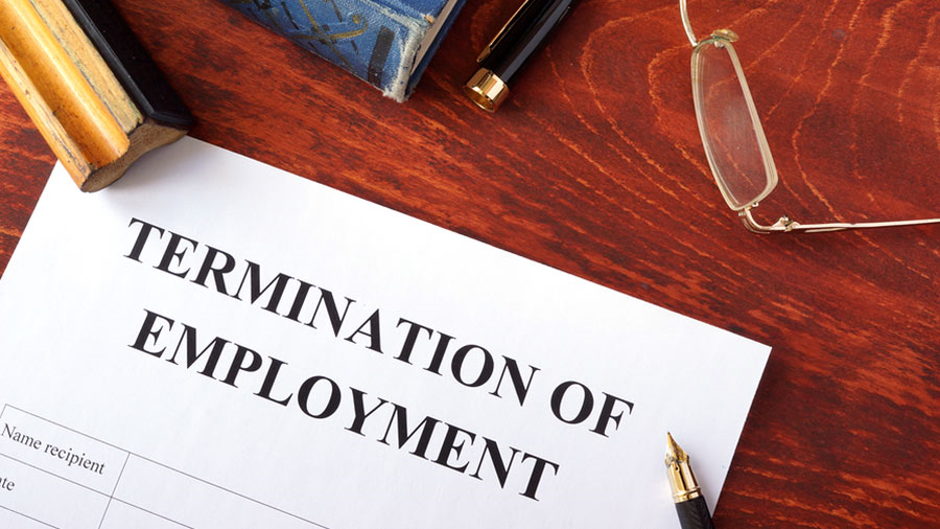The recent Fair Work Decision found that Stegbar Pty Ltd should not have terminated the employment of a full time glazier for being sick and absent from work following surgery. This decision reminded us that it is important for employees to understand how and on what basis they may terminate employment properly. Here is a quick overview of what you, as an employer, need to know.
Employment termination: what do I need to know?
In a perfect world, this question would never need to be asked as every employee would be perfect for the task they were employed for. Unfortunately, no such world exists. No matter how carefully an employer selects its employees, or how many opportunities an employee has to improve, it is inevitable that at some stage an employer will need to terminate someone’s employment.
It is an unpleasant and unenviable task but, by knowing how to affect a termination of employment correctly, employers can save themselves the headaches and the thousands of dollars involved in a resultant unfair dismissal claim.
To help you navigate the process of employee termination, this article looks at:
- Why an employee could have their job terminated;
- Steps that might need to be taken before an employee’s job can be terminated;
- ‘Notice period’ requirements; and
- Where to go for additional advice and guidance.
Reasons for terminating employment
There are many reasons why an employee might have their employment terminated, including where the employee:
- exhibits consistent poor performance;
- engages in misconduct or dangerous behaviour; or
- refuses to follow instructions given to them.
An employer can dismiss an employee for various reasons, provided that such reason is not to stop an employee from exercising their ‘workplace rights’, is not discriminatory in nature or stops the employee from making a complaint about the employer (either under anti-discrimination legislation or the Fair Work Act 2009 (Cth) (“FW Act”)).
Are there any steps that need to be taken before terminating an employee?
No; there is no specific requirement for an employer to take any steps before terminating an employee. Despite this however, we highly recommend an employer takes the time to follow a termination procedure, which may consist of;
- meetings with the employee to discuss any issues;
- issuing the employee with a warning(s);
- creating a performance management plan for the employee; or
- a combination thereof.
We recommend a procedure similar to the above, as it gives the employee the opportunity to improve or respond to the issues raised, potentially eliminating the need to terminate altogether. Or, even where termination of the employment is still necessary, following such a procedure is one less thing that can be raised where an employee claims they have been unfairly dismissed.
Business Victoria also provide free and insightful guides that can help employers effectively navigate employment termination, as does the Fair Work Ombudsman.
Does the employee need to serve out their notice period?
The short answer is no, you are not required to have the employee serve their notice of termination period and, as such, can dismiss the employee instantly. If, however, an employer elects to take this approach, payment in lieu of such notice period must be paid to the employee, subject to certain exceptions. Payment in lieu of notice must equal the full amount the employee would have been paid as if they worked until the end of the notice period (which includes allowances, penalty rates, bonuses, etc.).
However, an employer will not be required to provide the employee with notice, where the reason for the termination of employment is due to ‘serious misconduct’ or dangerous workplace behaviour. The Fair Work Regulations (2009) at 1.07 provide the following examples of ‘serious misconduct’ by an employee:
- Conduct which causes a serious health and safety risk to others;
- Conduct which threatens the reputation and viability of the employer’s business;
- Theft, fraud or assault during the course of the employee’s employment;
- Intoxication at work; and
- Refusal to carry out lawful and reasonable instructions consistent with their employment contract.
While the precise notice period required to be served or paid out will ultimately depend on the specific employee’s situation, the FW Act sets out a general scale in section 117(3)(a):
| Employee’s period of continuous service with the employer at the end of the day the notice is given | Notice Period |
| Not more than 1 year | 1 week |
| More than 1 year but not more than 3 years | 2 weeks |
| More than 3 years but not more than 5 years | 3 weeks |
| More than 5 years | 4 weeks |
Conclusion
Ending a person’s employment is unpleasant and a difficult workplace relations exercise, and there are many traps for employers who are not experienced in dealing with employment termination. In preparing to terminate an employee, you need to remember employees can claim that they were unfairly dismissed if appropriate processes are not followed, which makes this area especially problematic to say the least!
Need more information, and specialist advice?
There are no set rules for terminating an employee that minimises the associated legal risks but we can help guide you through the process so that it is as smooth as possible, minimising legal risks as we go.
Get in touch to receive a FREE ‘How To Guide’ on the best practice for conducting exit interviews! Or head to our website to find out more about our resource pack on ‘How to Fairly Dismiss an Employee’, which includes all the letters and tools you will need in your next employee termination.
Lastly, for specialist assistance during these challenging times, contact us at Workplace Wizards support@workplacewizards.com.au or 03 9087 6949.



0 Comments Leave a comment